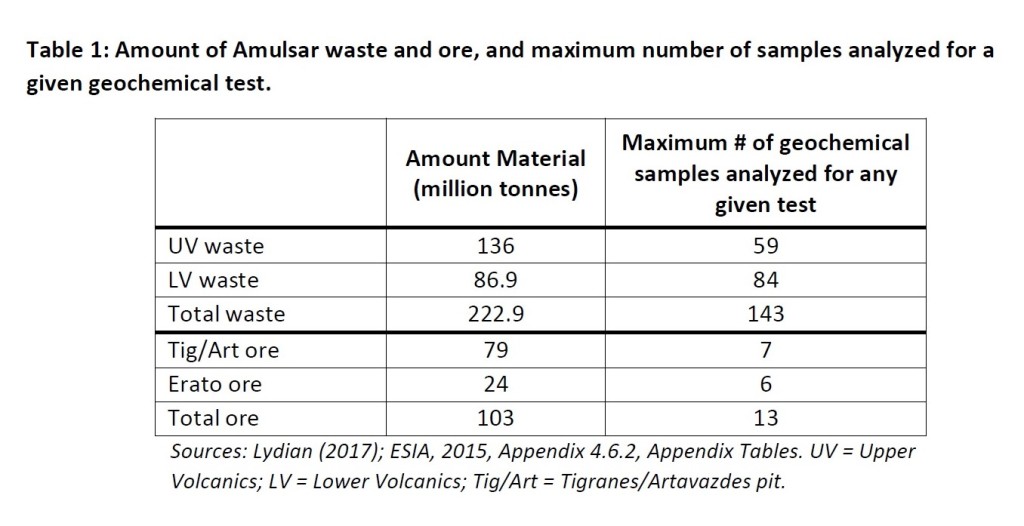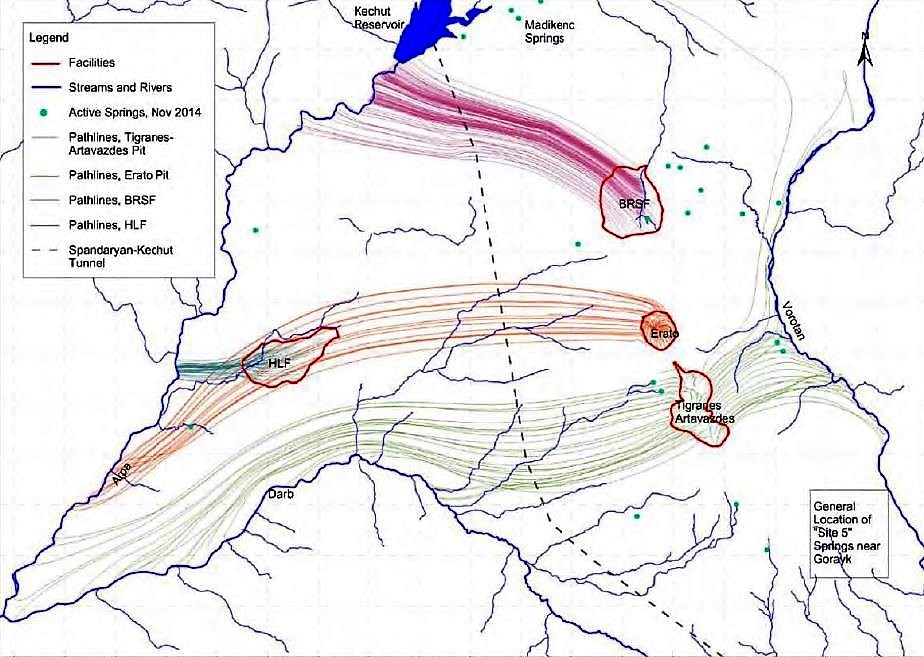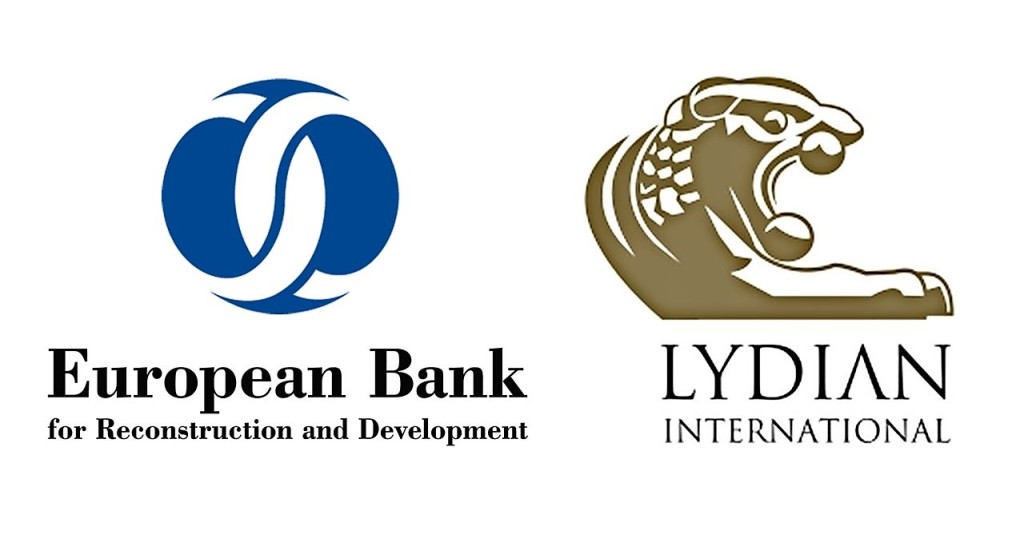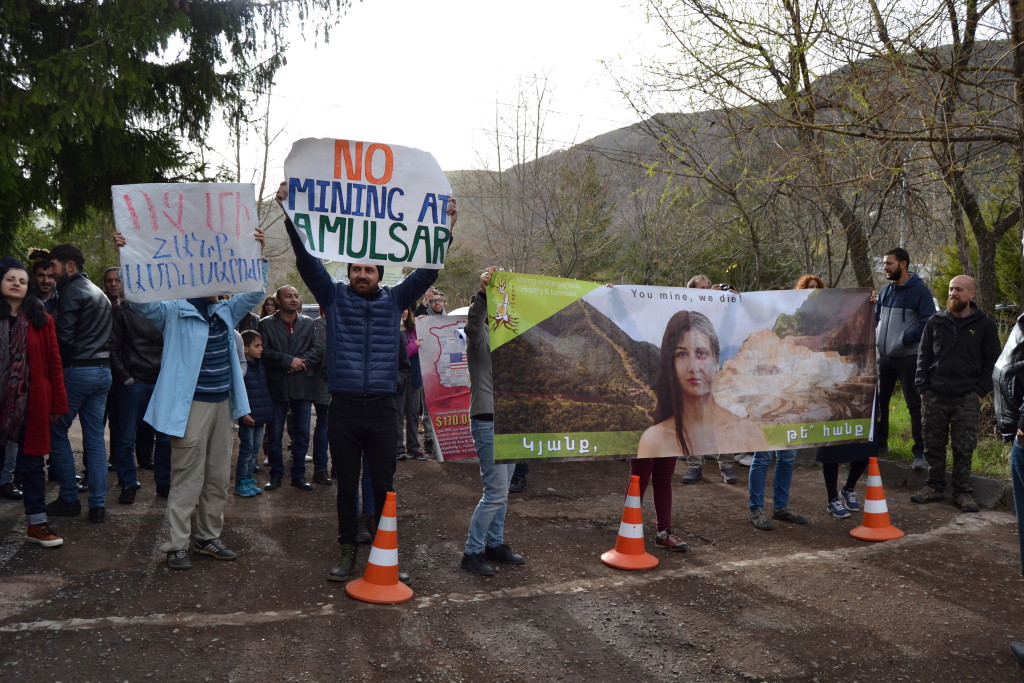International expert disagrees with Lydian’s optimistic interpretations regarding Amulsar mine and notes the errors of geochemical characterization
On October 30, 2017 Ann Maest, PhD, “Buka Environmental” presented a Memorandum titled “Evaluation of Geochemical Characterization Results and Proposed Additional Studies for the Amulsar Project, Armenia”. Her contracting party is chemical/environmental engineer Harry Bronozian. Hereby, we present the summary of the evaluation. The full version is available in the enclosed file.
The expert summarizes her main points as follows:
“Lydian did not follow accepted procedures for geochemical characterization of mined materials. Errors or omissions include:
- not identifying geochemical test units for wastes;
- using too few samples relative to the volume of rock mined;
- not using samples that represent the full range of acid generating or contaminant leaching behaviors;
- prematurely ending kinetic tests before they reached steady-state or maximum contaminant concentrations or steady-state pH values;
- using inappropriate short-term leach tests; and
- not testing mitigation measures claimed to prevent or mitigate the formation and transport of acid mine waters.
Considering the available data and these errors or omissions, we disagree with the conclusion of Lydian’s independent reviewers for the Amulsar Project, Knight Piésold, that the characterization program was adequate and with Lydian’s claim that spent ore and Upper Volcanic wastes will be non-acid-generating. The preponderance of the rocks at Amulsar are potentially acid-generating, and little to no neutralizing rock exists in the deposit”.
Maest analyzes general approaches for geochemical characterization of mined materials; she focuses on the approach used by Lydian vs good practice, and proposes additional testing to be carried out by Lydian. The report identifies 5 issues connected with acid drainage and mine material characterization, reveals the shortcomings of Lydian’s assessments and gives recommendations towards improving the project.
Issue 1: Geochemical test units were not identified for Amulsar wastes. The information presented about the deposit demonstrates that the Amulsar site geology, mineralogy, and alteration are variable and complex. Despite this complexity, the wastes were not subdivided into geochemical test units – they were simply grouped into upper volcanic (UV) and lower volcanic (LV) materials for testing. Amulsar ore is proposed to be left on the landscape forever. Changes will occur to the material in the heap over time from oxidation and other reactions. These changes require that samples of ore and spent and rinsed heap leachate should be collected and analyzed before mining begins, as the heap develops over time, and during closure/post-closure.
Issue 2: UV waste and ore appear to have either uncertain ability to generate acid or are potentially acid generating (PAG), yet no additional testing is proposed. It is recommended to conduct long-term (for at least one year) kinetic testing on spent ore and additional UV samples believed to be of uncertain acid-generating characteristics using the Net neutralizing potential (NNP) approach.
Issue 3: Humidity cell tests were not conducted for long enough, too few samples were used, and the samples were not representative. Only eight humidity cell tests (HCTs) were conducted. Although the best international practices recommend conducting tests for the duration of at least 1 year, in the case of Amulsar four of the eight tests were stopped at 20 weeks. This is especially important because all HCTs that had neutral pH leachate initially went on to produce acidic water if they were run for over 20 weeks (ESIA, 2015, Appendix 4.6.2, Figure 8-1). The acid-generating and metal leaching potential of Amulsar wastes and spent ore cannot be adequately determined without more kinetic testing using more representative samples and longer test lengths.
Issue 4: Short-term leach tests used to characterize contaminant/metal leaching potential produced dilute leachate from non-representative rocks.
Issue 5: Encapsulation of PAG LV rocks was not tested for effectiveness despite the fact that one of the primary mitigation measures used to prevent or minimize the formation of acid drainage is encapsulation of PAG LV rocks in the barren rock storage facility (BRSF). It is recommended to do encapsulation in acid-consuming materials which do not exist in the Amulsar deposit.
Maest summarizes the Memorandum by stating: “Additional geochemical characterization testing is needed on Amulsar ore and wastes to determine the short- and longer term environmental behavior of mined materials that will be left on the land surface or in backfilled mine pits forever. The results to date have been interpreted optimistically, and the full potential for acid generation and metal leaching has not been acknowledged in the Lydian reports or the report of their independent evaluator. Given that wastes generated by past mining activity have generated acidic drainage, a more conservative interpretation is warranted. Much more work is needed especially on the spent ore and the UV rocks, which have been prematurely declared to be non-acid-generating. Mined material characterization is crucial for more defensible prediction of operational and closure/post-closure water quality, and for effective mitigation measures that rely on the results of these tests”.
In June-July 2017, experts from three internationally acclaimed companies (Blue Minerals Consultancy, Australia, Buka Environmental, USA and Clear Coast Consulting, Inc., Canada) presented reports regarding some of the ecological risks of the Amulsar gold mining project. These reports focus on acid rock drainage (ARD) generating potential at the mine and the impact of surface and group-waters on ARD, assessment of hydrogeochemical issues, as well as treatment of waters at the risk of contamination.
Their overall recommendation is “that mining should not start until the environmental outstanding issues are properly investigated by independent bodies/consultants. Their findings should be incorporated into an acid and metalliferous drainage (AMD) management plan that includes and makes explicit both government and company responsibilities and liabilities”.
However, the Government and the Ministry of Environmental Protection of Armenia do not wish to seriously study these reports and to come up with their own expert opinion. Similar to the previous governments of Armenia they, too, prefer to “trust” the arguments of Lydian, an offshore company, and refer only to their reports. Nevertheless, we believe that common sense will win over the rush for investments, and that the decision makers will revise their one-sided stance by stopping the Amulsar project. International experts have brought a large number of well-grounded arguments that support such a decision.
Photo: Amulsar, view from Jermuk resort town
Armenian Environmental Front (AEF) civil initiative








